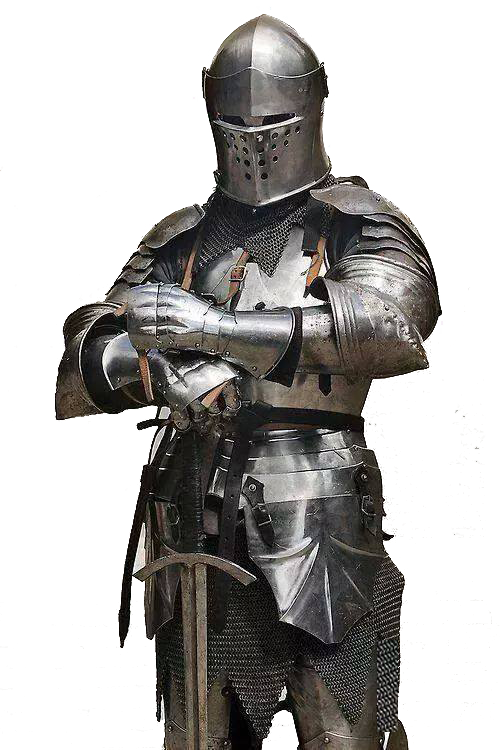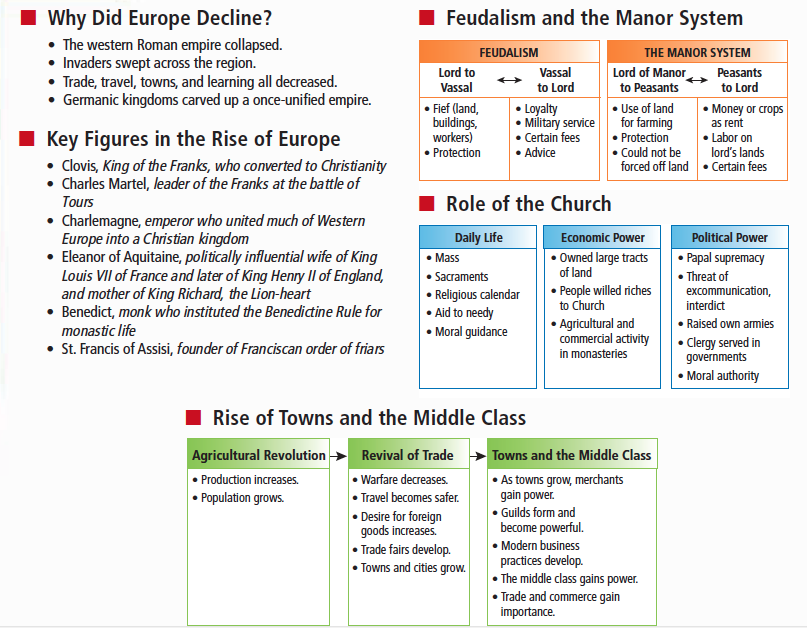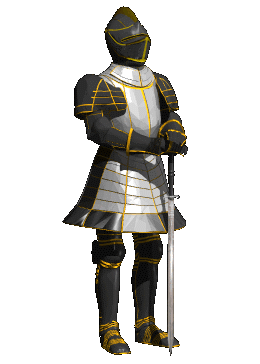
Those who pray, those who work, those who fight.

As Roman civilization declined, Europe became an isolated land of disunity, conflict, and poverty. Charlemagne, allied with the Roman Catholic Church, created a new empire with a blend of German, Roman, and Christian traditions. After his death, however, internal divisions and invasions once again disrupted European life.
The dominant forces during the early Middle Ages were feudalism, the manor economy, and the Roman Catholic Church.
Through interdependence and mutual responsibilities, feudalism provided people with protection and other benefits. Everyone in medieval society had a clearly defined role. Women’s rights were generally restricted, but the noblewomen played significant roles.
Agriculture was the major economic activity on the medieval manor. Iron plows, new types of harnesses, windmills, and other new technologies led to an agricultural revolution in Europe. As population grew, so did the demand for goods. In response, trade revived and towns prospered.
The Roman Catholic Church, with both spiritual and secular power, dominated life in the Middle Ages. Monks and nuns provided society with spiritual, social, economic, and cultural benefits. However, abuses within the Church brought about the need for reform.

You must be logged in to post a comment.